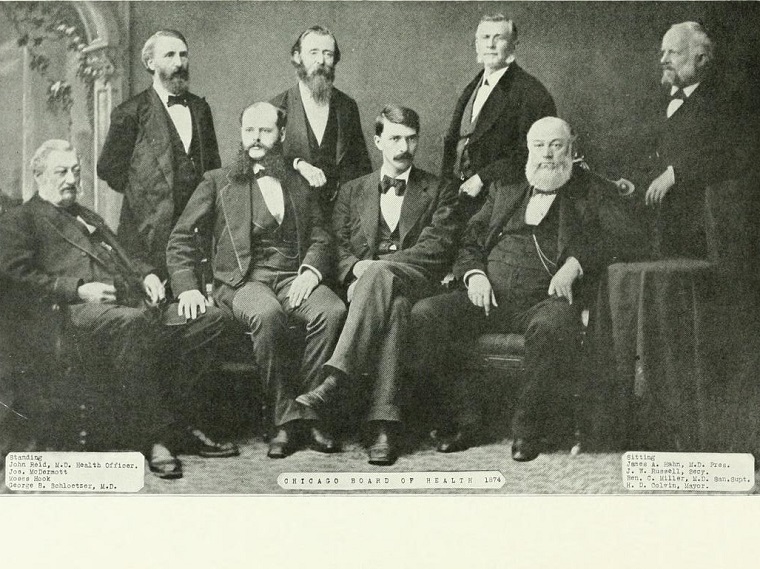Nerdy and perhaps a bit morbid, but health statistics fascinate me. The Reports of the Board of Health of the City of Chicago document Chicago's fight against disease during the 19th century. Often disease won, but over the course of the century, steady progress occurred.
After the establishment of Fort Dearborn in 1804, many of its soldiers were troubled with "intermittent fever"—likely malaria. By the 1850s malaria was mostly under control. Living indoors and drinking concoctions of Peruvian Bark (quinine) stopped the transmission.
Although small pox epidemics continued to occur, small pox vaccination reached the U.S. even before the establishment of Fort Dearborn. Quarantine and vaccination kept the disease mostly at bay
Asiatic cholera epidemics periodically ravaged Chicago from the 1820s until the 1860s. During the 1849 epidemic, one in every 35 Chicagoans died from it. The disease waned in North America after the 1860s. The relationship between Chicago's contaminated shallow wells and cholera was understood quite early and provided an incentive for Chicago to develop its piped lake water system.
Typhoid, scarlet fever, diphtheria, whooping cough, and tuberculosis took a constant toll and were largely beyond the reach of medical science until the end of the century.
Infant mortality was a constant problem. Many years more than half of all people dying were young children. I estimate that a Chicago infant born in 1870 had less than a 50% chance of turning five years old. Nowadays the odds are better than 99%. Most infant deaths were caused by dysentery due to unsanitary conditions.
In general, microbes caused most 19th century deaths. For example, in 1882, over 7,000 of the 13,234 deaths were caused by microbes. By the early 20th century, germs were well understood and most diseases were being brought under control by measures such as chlorination of water and pasteurization of milk.
Tuberculosis remained a leading cause of death. As late as 1917 it accounted for nearly 10% of all deaths. Health officials thought tuberculosis especially bad because it affected working age adults who society had already spent years educating and keeping alive.
In the 21st century over half of Chicago's deaths are from heart disease and cancer. Other leading causes include liver and kidney disease, diabetes, accidents and homicide. Germs barely make the list.
The first report entitled Report of the Board of Health … 1867, 1868 and 1869 and a Sanitary History of Chicago from 1833 to 1870 is especially worth noting. Also noteworthy is the 1911-18 Report containing a report on the influenza epidemic, mortality statistics 1867-1918 and a history of Chicago's public health.
Although these two reports give a good overview of the 19th century, the individual annual reports are also interesting. One reports notes a death as "bit by tiger" and another due to "swallowed tin whistle." Other reports detail tenement house inspections, public baths, sewers and garbage pickup. They are a great source of information on the stockyards.
A reoccurring topic is the stench which some doctors thought caused disease. A shift of wind could bring the stink of the stockyards to the whole city. Outhouses, sewers, garbage, dead animals and the polluted Chicago River caused bad odors everywhere.
The reports are available in the Municipal Reference Collection and electronically at Hathi Trust. This post is part of a series on Chicago history classics.




Add a comment to: Report of the Board of Health of the City of Chicago: Chicago History Classics